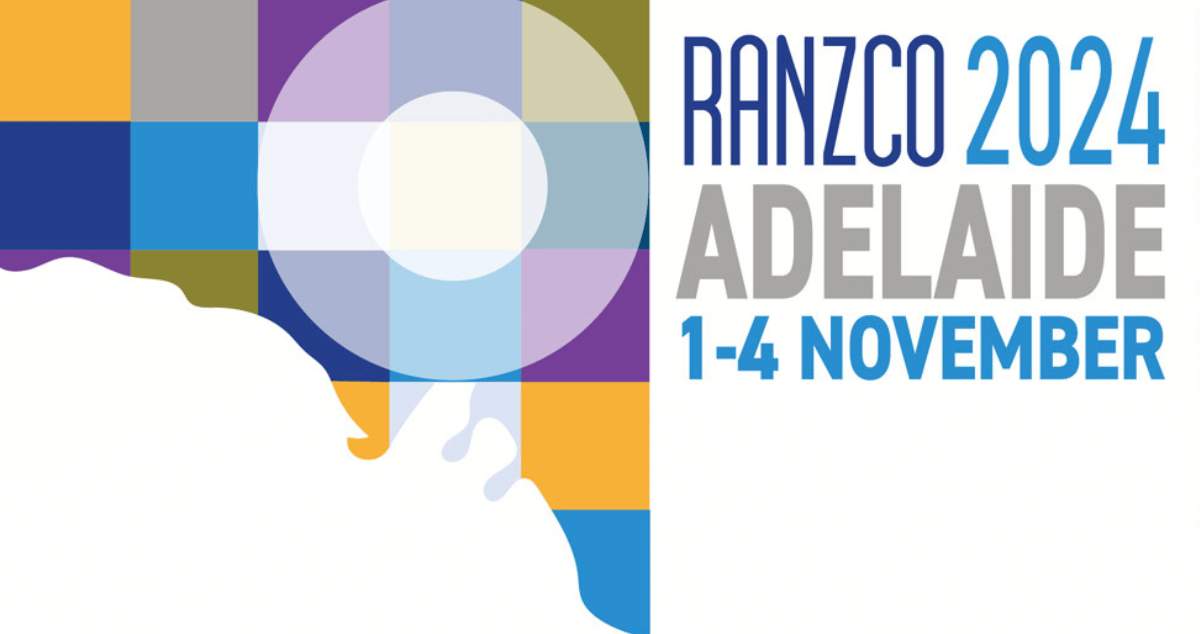Share
As part of its Vision 2030 and beyond initiative, RANZCO has hosted a range of Collaborative Care Workshops. As RANZCO President, Grant Raymond, writes, the workshops bring together members of the eye care sector to build collaboration and improve communication, but also have tangible outcomes.

Workshops, facilitated by the Royal Australian and New Zealand College of Ophthalmologists (RANZCO) over the past six months, and supported by educational sponsorships from Bayer and Roche, are yielding important patient outcomes. The collaborative models of care being discussed ideally improve access to healthcare and specialist services, and are cost effective and convenient.
The Paediatric Collaborative Care Workshop was the first of these workshops and was led by Prof Shuan Dai and Dr Caroline Catt. Over 20 experienced eye health professionals discussed three critical issues related to children’s eye health: advocacy, prevention and early intervention, and referral for sight and life-threatening conditions. There was consensus over the need for improved public health campaigns and media promotions. The workshop participants also identified the need for educational resources and accessible clinical guidelines and standards for all involved in children’s eye health – from general practitioners to school nurses. A consistent national framework for children’s vision screening was also a point of consensus.
The Glaucoma Collaborative Care Workshop was held in June and led by Dr Anne Lee. The event was attended by 28 eye health stakeholders, including ophthalmologists, optometrists, orthoptists, ophthalmic nurses, and representatives from consumer organisations and policy and advocacy peak bodies. The workshop followed some 12 months of effort to collate and document the various collaborative models of care for the screening and management of glaucoma in different settings throughout Australia. Three models of care, largely based on the documented models, were discussed and those with potential for scalability were identified.
“A common theme across all workshops has been the need for better quality and more accessible data.”
Most recently, Dr Hessom Razavi and Professor Robyn Guymer facilitated the workshop focussed on collaborative care models for age-related macular degeneration (AMD). Attended by 26 eye health stakeholders, including health professionals and consumer advocates, three key issues were discussed relating to AMD in Australia: education and advocacy, collaborative care models for AMD, and management of geographic atrophy and low vision from advanced AMD. A range of recommendations were made to raise awareness among patients and health professionals of different stages of AMD, to scale up collaborative care models to improve service delivery for AMD management, and to increase access to low vision services.
A common theme across all workshops has been the need for better quality and more accessible data. Whether this be in the form of My Health Record or another system, data must be able to be easily captured, shared, accessed and interpreted. This will reduce duplication of effort and ensure that policy decisions, position statements, guidelines and advocacy efforts are built on an evidence-based footing.
At the time of writing, collaborative care workshops for diabetic retinopathy, digital health, Indigenous eye health, and cataract were being rolled out or planned.
NZ Eye Health Network
In Aotearoa New Zealand, in conjunction with Vision 2030 and beyond, the Eye Health Network is making progress towards reducing the unacceptably high rate of preventable vision loss. This is yet another example of a collaborative effort involving optometrists, orthoptists, and clinical nurse specialists, led by RANZCO Fellows Drs Sarah Welch, Alistair Papali’i-Curtin, and Justin Mora.
Issues of workforce shortage in Aotearoa New Zealand necessitate an even stronger focus on a collaborative approach to eye health. There is an initial focus on three designated work streams – based on key life stages of childhood, adolescent, and adult – with a future focus on myopia prevention, AMD, glaucoma, and low vision. All work is underpinned by a commitment to sustainability and the provision of culturally safe care.
“Issues of workforce shortage in Aotearoa New Zealand necessitate an even stronger focus on a collaborative approach to eye health.”
Education and Training
On the education front, the College is leading a consortium of six medical colleges to develop a Standardised Supervisor Training System. This work is supported by government funding and a project team of three RANZCO staff. It is a great example of RANZCO leading in collaborative efforts that create uniformity across health education, reducing duplication and increasing efficiency and effectiveness. This is happening at a time when all Colleges are feeling the pressure of changes to everything from the assessment of Specialist International Medical Graduates, accreditation of hospital training positions, to how society grapples with the, unfortunately, ever-present problem of bullying and harassment.
I have little doubt that our dedicated staff and fellows will help us work through what promises to be a challenging few years and will make every effort to optimise the outcomes from the contentious issues confronting the College.
This artical has been republished courtesy of Mivision


